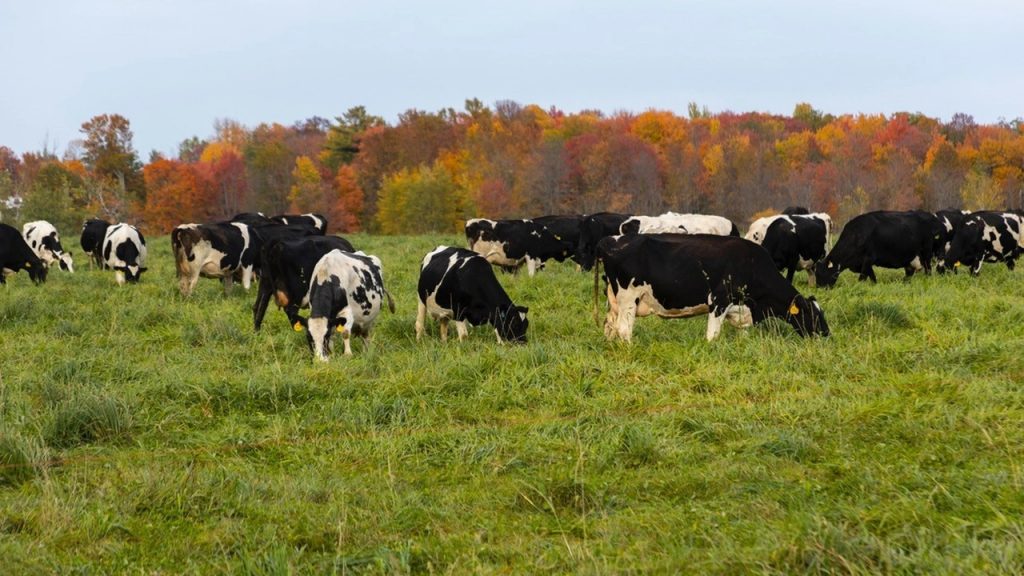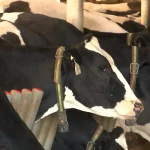
Dairy Outlook: U.S. dairy processing continues to evolve, as today’s consumers are more likely to eat their dairy than drink it.
Dairy product sales are dynamic and growing with more than $76 billion in annual U.S. sales, making it the largest category in retail grocery, according to recent sales data. However, dairy product sales look much different than in generations past, says Corey Geiger, chief dairy economist at CoBank.
U.S. fluid milk sales in 2023 receded to 42.8 billion pounds — a level not seen since 1954, when the U.S. population was less than half what it is today.
“The dairy category continues to grow because over 80% of U.S. farm-gate milk now goes into manufactured dairy products such as cheese, whey, butter, nonfat dry milk, yogurt, ice cream and other products that depend heavily on milk components, not the fluid portion,” Geiger explains. “These shifting tides mean that milk solids, not milk volume, matter more to dairy processors, as consumers are more likely to eat than drink their dairy.”
Export opportunities for dairy
U.S. domestic markets aren’t the only category experiencing seismic shifts. These days, U.S. dairy product export sales represent a growing category that now accounts for 16% to 18% of the U.S. milk supply on an annual basis, Geiger says.
“This market was virtually nonexistent prior to 1995,” he notes. “Manufactured dairy products dominate these export opportunities and create more demand for milk components.”
Opportunities for growth both at home and abroad are among the reasons domestic and international dairy processors are investing over $7 billion in new dairy processing assets in the coming years. Nearly all projections had forecast that the U.S. would have more growth upside when compared to the world’s two other major dairy product exporters: New Zealand and the European Union.
“While nearly everyone in the industry forecast that U.S. milk production would keep growing, milk production began stalling in 2022 and has held relatively flat ever since,” Geiger says. Yet, the U.S. continues to produce more manufactured dairy products with each passing year to meet consumer demand for products with higher butterfat and protein levels.
“That’s possible because milk from the nation’s dairy farms yields more dairy products annually due to higher concentrations of protein and butterfat,” he says.
Milk volume, components diverge
USDA released its first Milk Production report in 1924, and it’s been a guide for dairy farmers, processors, marketers and retailers alike to track milk supplies and project potential dairy product output and price expectations. As the industry continued to grow, butterfat composition was largely an afterthought.
“Butterfat levels held extremely consistent from 3.65% to 3.69% from 1966 to 2010,” Geiger explains. “If milk volumes went up, so did butterfat, and that meant growth in milk and butterfat production were synonymous for six-plus decades.”
While protein reporting didn’t come on the scene until the late 1970s, those levels largely followed butterfat patterns.
“However, milk production and milk solids started growing at different rates as the butterfat and protein portion in milk solids production began to outpace milk production in 2011,” Geiger says. “Since then, milk component production failed to surpass milk production in only two years — in 2014 and 2015, butterfat and protein percentages were essentially flat.”
That’s just the beginning of the unfolding story. Butterfat and protein levels in farm-gate milk climbed significantly during the ensuing years. Butterfat moved from 3.7% in 2011 to 4.15% by 2023, according to USDA.
Boosting dairy’s growth
Taking a step back from annual comparisons and looking at a wider multiple-year observations illustrates just how much has changed since 2010. “From 2000 to 2010, productivity gains for milk, butterfat and protein held in a tight window ranging from 13.8% to 15.4%,” Geiger says. “During the next 13 years, from 2011 to 2023, milk grew just 16.2%. But for components, the story took a dramatic turn: Protein jumped by 22.9%, and butter catapulted by 28.9%.”
These component trends have continued picking up momentum despite stalled farm-gate milk production in the past two years.
“That’s important to note because if 2024 U.S. milk production finishes down for the second straight year, the 2023-to-2024 time span will be the first time since the late 1960s that U.S. milk output declined for back-to-back years,” Geiger says. “However, milk moving from farm to processor looks vastly different than those days, as it contains far more solids. That’s why U.S. dairy product output continues to grow.”
The trend is accelerating, as U.S. milk production has been down for 14 consecutive months, dating back to July 2023, Geiger says.
“While that would have been alarming decades ago, milk component production has grown in 12 of those 14 months, largely due to growing butterfat and protein percentages in the shipped milk, which are multiplied into more pounds of components,” he adds.
You can now read the most important #news on #eDairyNews #Whatsapp channels!!!
🇺🇸 eDairy News INGLÊS: https://whatsapp.com/channel/0029VaKsjzGDTkJyIN6hcP1K

























